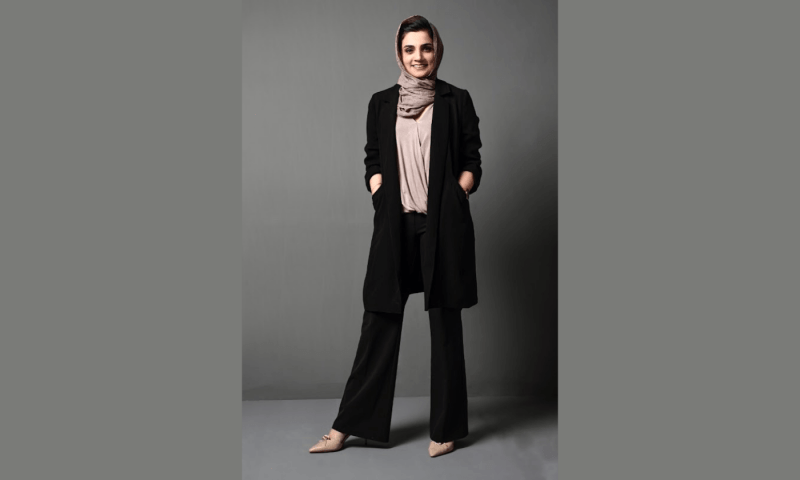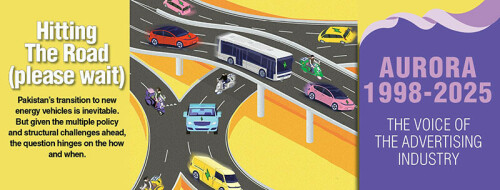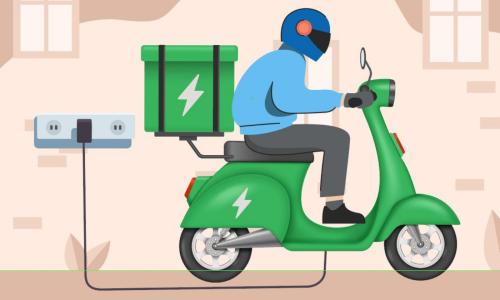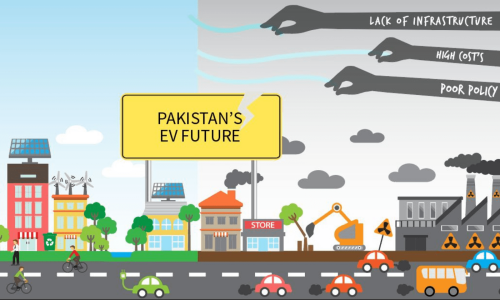“We want to make Pakistan a hub of innovation for EVs”
MAMUN M. ADIL: WHEN DID YOU JOIN EV TECHNOLOGIES?
HUMA YAHYA KHATTAK: I joined EV Technologies in September 2024, which is a sister concern of Wavetec, a 35-year-old company with several business interests. Prior to this, I spent a lot of time in the UAE in the telecom sector, including a tenure at Du. I moved to Pakistan due to personal reasons and initially worked with K-Electric, where I was head of customer experience. That was my first venture in the energy sector.
MMA: What is the relationship between ELFA and EV Technologies?
HYK: ELFA is the brand name of the e-bikes produced by EV Technologies. So far, we have launched three models: the ELFA EV 125 in January 2025; it is an electric equivalent to a traditional internal combustion engine (ICE) 125 bike. We followed this with a scooty and sports bike.
MMA: What were the factors that led to the launch of these e-bikes?
HYK: Primarily the rising fuel costs consumers have to deal with repeatedly and the pollution ICE bikes cause, including noise pollution.
MMA: Who is your target audience?
HYK: For the ELFA EV 125 (our flagship product), our primary target audience is made up of people from SECs C and D who use bikes for their daily commute, as well as students from SEC B. Our sports bike is a premium product and caters to SEC A and B. Scooties are interesting in that they are purchased by people from most SECs. For some reason, they are associated with women, which I am not convinced about, as this is not necessarily the case in other countries.
MMA: What differentiates ELFA bikes from other brands?
HYK: We do not use graphene batteries (the case with most electric bikes). We use lithium-ion batteries, which are more stable, have a better life cycle, and are more sustainable. Specifically, the ELFA EV 125 can be driven in three different modes that use different amounts of energy: eco, city and sports. These modes allow the bikes to function at various speed limits; for example, the eco mode has a top speed of 45 km/h and does not use too much power from the battery, unlike the sports mode, which has a higher top speed. The ELFA EV 125 also has a reverse mode, which I don’t think anyone else is offering, and allows users to reverse the bike by changing the mode instead of having to physically drag back the bike, which is usually the case. We offer a superior battery management system (BMS), which is extremely important; it ensures safe charging conditions and a longer battery life. The bike can be fully charged in three hours or so, and users can use the same switch they use to charge their mobiles to do so.
MMA: Do these features provide an edge over your competitors?
HYK: Technological features can give you a short-term advantage because they can easily be replicated by other players. What I think really gives us an edge is our after-sales customer support and the best-in-class customer experience. For example, we provide prompt assistance directly to our consumers if they face a problem with their bikes, and they do not have to go through a dealership if they need assistance. We also have an ‘on-boarding experience’ for new customers, which involves calling them regularly for a month to ascertain whether they are facing any challenges. This is why I think people have resonated so much with the product – they know that someone will be available to help them if they face a problem. Furthermore, we offer a three-year warranty on key components, including the motor and battery, which exceeds what most other manufacturers provide.
MMA: Where are ELFA bikes available?
HYK: Karachi is our home ground, and that is where we decided to launch, although it is a more challenging market than cities in Punjab because of infrastructural reasons and the fact that it is Pakistan’s largest city. We are also available in Hyderabad and Mirpurkhas, and we are planning to expand to Punjab and KP. We could have expanded sooner, but we decided to wait for the initial response to the bike before doing so. As it turned out, the product did really well, and we sold out the ELFA EV 125 by early April. This despite the fact that initially we were met with a lot of scepticism, mainly because several companies had merely imported and sold electronic scooties which did not perform very well due to several reasons, and this created a negative image of EVs in the market.
MMA: Which components of the bike are imported?
HYK: We import a few components, including the motor and battery cells, and the batteries are assembled here. Everything else is done here, like design and manufacturing. The spare parts are easily available in Pakistan, and we want to localise the manufacturing as much as possible. We want to make Pakistan a hub of innovation for EVs.
MMA: Why choose the EV 125, given it is more expensive than other e-bikes in the market and ICE bikes?
HYK: I would like to clear a common misconception. A conventional ICE bike costs approximately Rs 240,000, while the ELFA EV 125 costs Rs 300,000, a difference of approximately Rs 60,000. Furthermore, according to our research, most people spend between seven thousand rupees and Rs 25,000 on fuel costs every month, while the EV 125 needs two units of electricity to be charged completely – and which can cost Rs 5,000 to 7,000 on a monthly basis; this means they will still save substantially by using it. Furthermore, the maintenance costs of e-bikes are lower than ICE bikes, as they do not require regular oil or new component changes, such as new filters or spark plugs, which can cost upwards of Rs 5,000 a month. All these factors make e-bikes more economical on a long-term basis.
MMA: Are you also targeting B2B customers?
HYK: We are about to partner with Bykea. We gave them our bikes for testing and requested them to assign them to riders who provide more than two rides a day to customers. Bykea were impressed by the performance of our bikes, and one of their observations was that the longest range one of our bikes with two passengers achieved was 115 kilometres on a single charge, which was very encouraging. Another B2B collaboration is with Vendi, a company that sells and refills vending machines. They were so happy with our product that they eventually replaced their entire fleet with our bikes. Furthermore, they also help us market our product by distributing our brochures to their customers.
MMA: What other marketing channels do you use?
HYK: We use digital media for our messaging, which is built around educating people about the benefits of EV technology and how opting for an e-bike can lead to substantial savings and a greener lifestyle. However, physical channels are the most important for us, be it pop-ups or on-the-spot activations at venues such as educational institutes and which allow potential buyers to try the bikes. They can also do this at the dealerships where our bikes are sold.
MMA: What are your short- and long-term goals for ELFA bikes?
HYK: We want to be one of the leading manufacturing companies and capture as much market share as possible. More specifically, if, for example, we sell 6,000 bikes in 2025, I would like to see that figure double next year. Ultimately, we want to change people’s lives.
For feedback: aurora@dawn.com




Comments (3) Closed